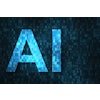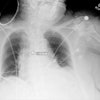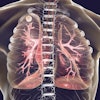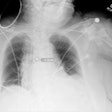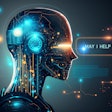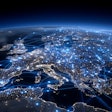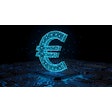
The advances in medical imaging over the last few decades are frequently cited as being among the most important achievements of modern medicine. The diagnostic possibilities afforded by new imaging modalities have driven an explosion in demand for scans of all types.
And yet the ways in which radiologists work have not evolved to the same extent. Yes, the light box has been replaced by a workstation, but the principle of a single individual reviewing images on a single occasion, and then issuing the definitive report, remains unchanged.
 Dr. Giles Maskell.
Dr. Giles Maskell.Our current working model was established at a time when a whole examination consisted of a small number of images, and the time taken for interpretation was no more than a minute or two. We now apply the same way of working to examinations that consist of thousands of images and may take half an hour or longer to assess.
In addition, we frequently work in poorly designed environments, subject to frequent interruption and multiple distractions. Fatigue is a constant concern -- sustaining focus for the time required to review and interpret a couple of thousand images is difficult, and a moment's lapse in concentration can result in a significant abnormality being overlooked. We are set up to fail.
Somewhere in the region of 40 million radiology reports are issued each year in England. We can estimate from numerous studies that the reporting error rate in daily practice is around 3% to 5%, rising to 20% to 30% for more complex studies such as CT and MRI. A rough calculation therefore suggests that at least 1 million of these reports each year will contain errors. Most of these errors will not result in harm to patients, but some do.
Radiologists have come a long way in acknowledging the extent of the problem, but have made little progress as yet in reducing the number of errors we make. In the future, advances in artificial intelligence and machine learning will mean a growing role for computer-assisted interpretation.
For now, the only clear solution is for images to be reviewed independently by more than one individual (or perhaps by the same individual on more than one occasion). Workforce constraints have severely limited our ability to do this, but perhaps the time has come to put considerations of quality and safety first, and start to define certain types of high-risk, "high stakes" examinations where interpretation by a second reader is mandatory. Examples might include examinations in which there is a strong clinical suspicion of new or recurrent cancer.
Structured reporting templates can perform the role of checklists in other disciplines in helping to ensure that all relevant aspects of a study are considered and communicated to the referrer. Attention to the working environment and system factors that result in fatigue can almost certainly help. Awareness of the many cognitive biases that may contribute to a discrepant report should theoretically be of assistance, although the evidence to date is limited.
Of course, having a second pair of eyes looking at the images would not guarantee a correct diagnosis in every case, but it would improve the chances and would carry the additional benefit of highlighting to the patient and referrer the level of uncertainty associated with a particular opinion.
I am as wary as the next doctor of drawing parallels between medicine and aviation, but most passenger flights do not rely on a single pilot in the cockpit. Should we?
By persisting with outdated working practices we are putting patients at greater risk of an incorrect or delayed diagnosis, and radiologists at risk of the consequences of making a significant error.
Dr. Giles Maskell is a radiologist in Truro. He is past president of the Royal College of Radiologists. Competing interests: None declared.
The comments and observations expressed herein do not necessarily reflect the opinions of AuntMinnieEurope.com, nor should they be construed as an endorsement or admonishment of any particular vendor, analyst, industry consultant, or consulting group.
